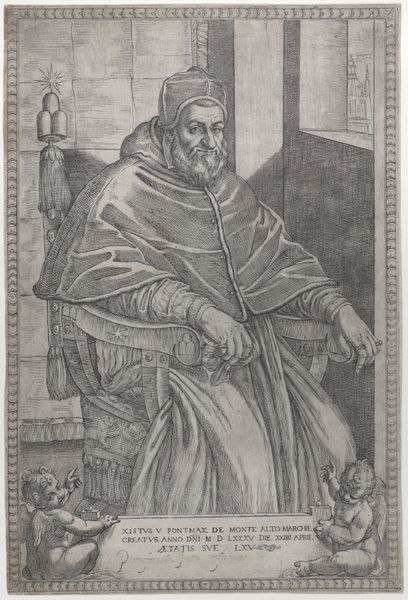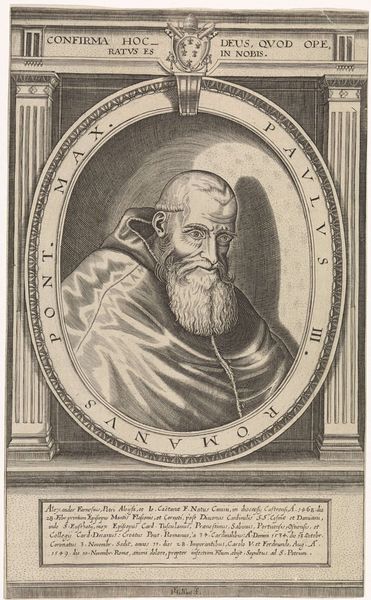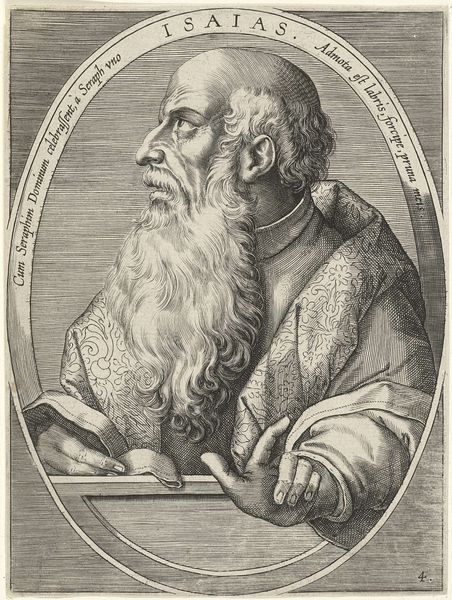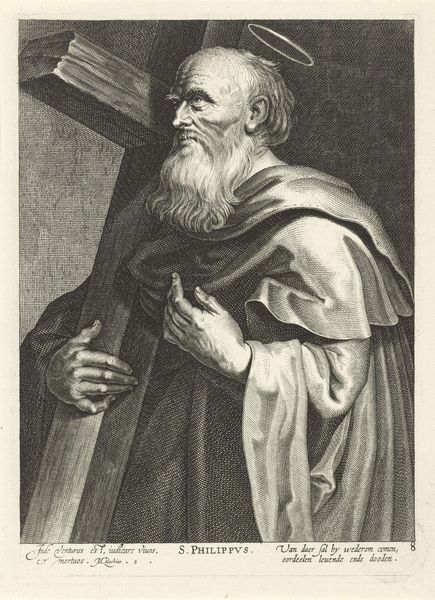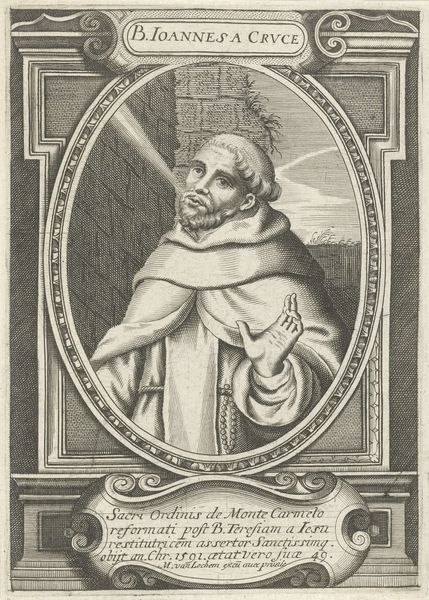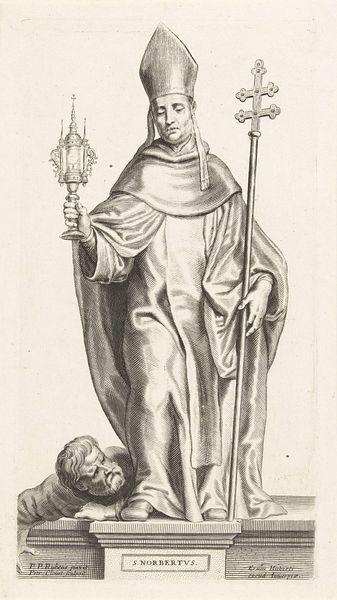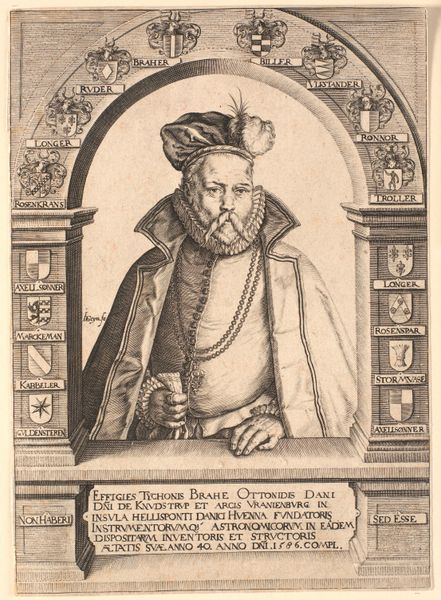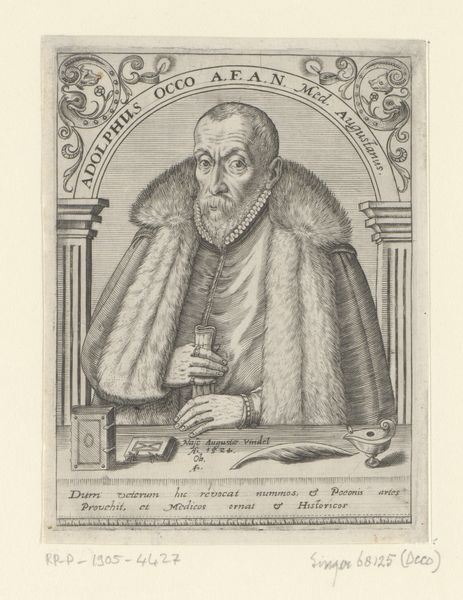
Saint Anthony Abbot (with Saint John the Baptist) 1389 - 1435
0:00
0:00
tempera, painting
#
portrait
#
medieval
#
tempera
#
painting
#
sculpture
#
figuration
#
black and white
#
history-painting
#
international-gothic
Dimensions: Overall, with shaped top and engaged (modern) frame, 58 5/8 x 16 1/2 in. (148.9 x 41.9 cm); Saint Anthony 39 1/2 x 11 3/4 in. (100.3 x 29.8 cm); Saint John 12 3/4 x 8 7/8 in. (32.4 x 22.5 cm)
Copyright: Public Domain
Curator: Here we have Martino di Bartolommeo's "Saint Anthony Abbot (with Saint John the Baptist)," dating from somewhere between 1389 and 1435. Editor: Immediately, I’m drawn to the sheer amount of fabric—the heavy robes seem almost sculptural in their rendering, weighing down the figures. Curator: Yes, the International Gothic style loved those draperies. And of course the display of wealth and reverence was so key. Think about who these figures are: Saint Anthony, known for his renunciation of earthly goods, ironically portrayed with elaborate robes, the tempera shimmering as if to be gold. The image reflects more about societal expectations for honoring him through visual means than depicting Anthony himself. Editor: Tempera on panel requires precision; it's all about building up layers of pigment. I wonder about the specific pigment choices—did Bartolommeo source local materials or rely on international trade networks? Also the labor – how long to prepare that panel and apply these painstaking details? It shows a whole chain of material culture behind it. Curator: Absolutely, thinking about the availability of materials tells us much about artistic centers and trade routes in Siena at the time. But beyond that, what this panel reveals about religious institutions and the power they held over artistic production. Notice how St. Anthony has been given a certain grandeur appropriate for the time. He's presented as a man of solemn authority, ready to guide believers. Editor: Authority, but contained by very specific artistic conventions and material realities. What’s remarkable about early tempera paintings is the preservation of process itself – the brushstrokes, the textures built up layer upon layer; so it stands testament to this slow art of devotional labor. Curator: Yes, and the layers of cultural expectations influencing that devotional labor. The artist is balancing their patron's vision with social values that are changing—reflecting what it means to be a saint. The art displays that tension in ways more overtly revolutionary styles didn't necessarily acknowledge. Editor: Looking closely brings us into direct contact with all these past negotiations. Thank you! Curator: My pleasure. I hadn’t considered how the panel, through its very materiality, opens a portal into that earlier labor system and value system.
Comments
No comments
Be the first to comment and join the conversation on the ultimate creative platform.


